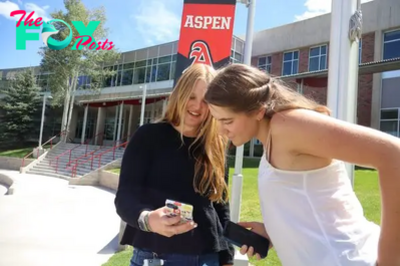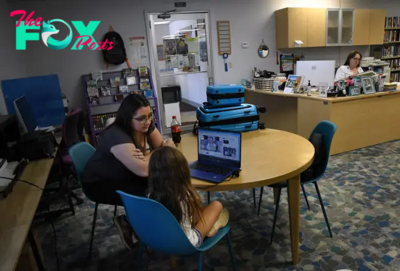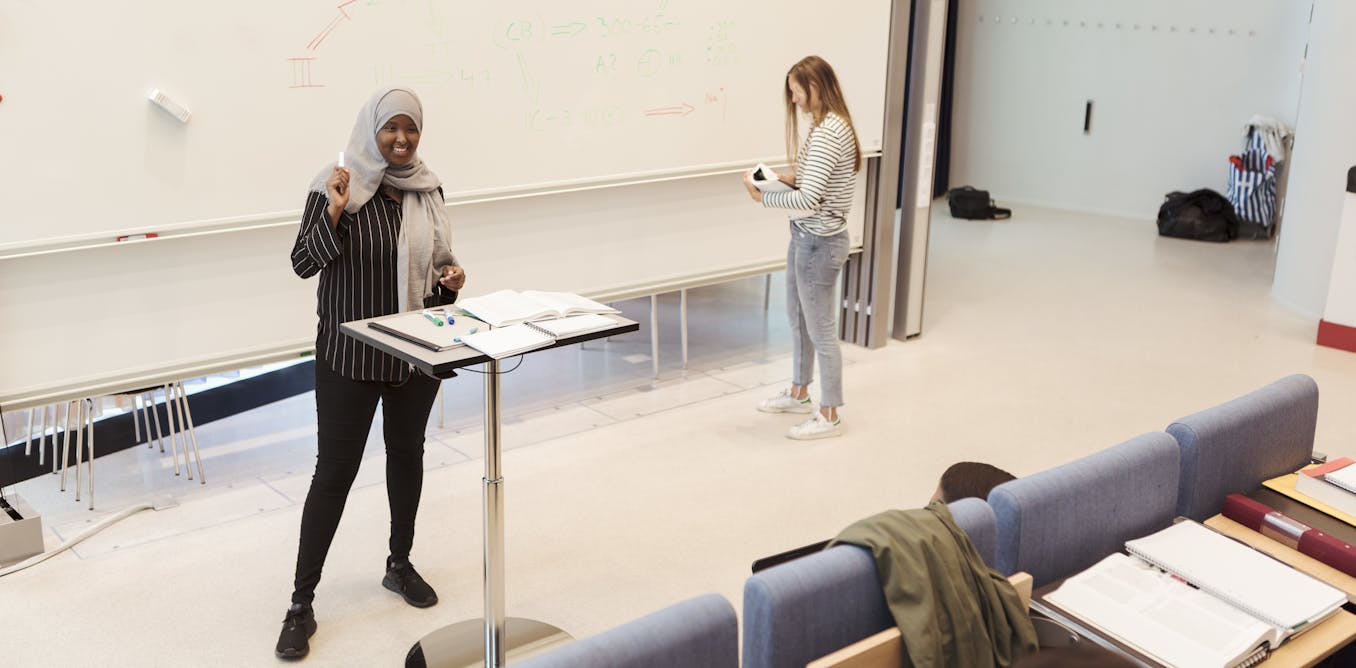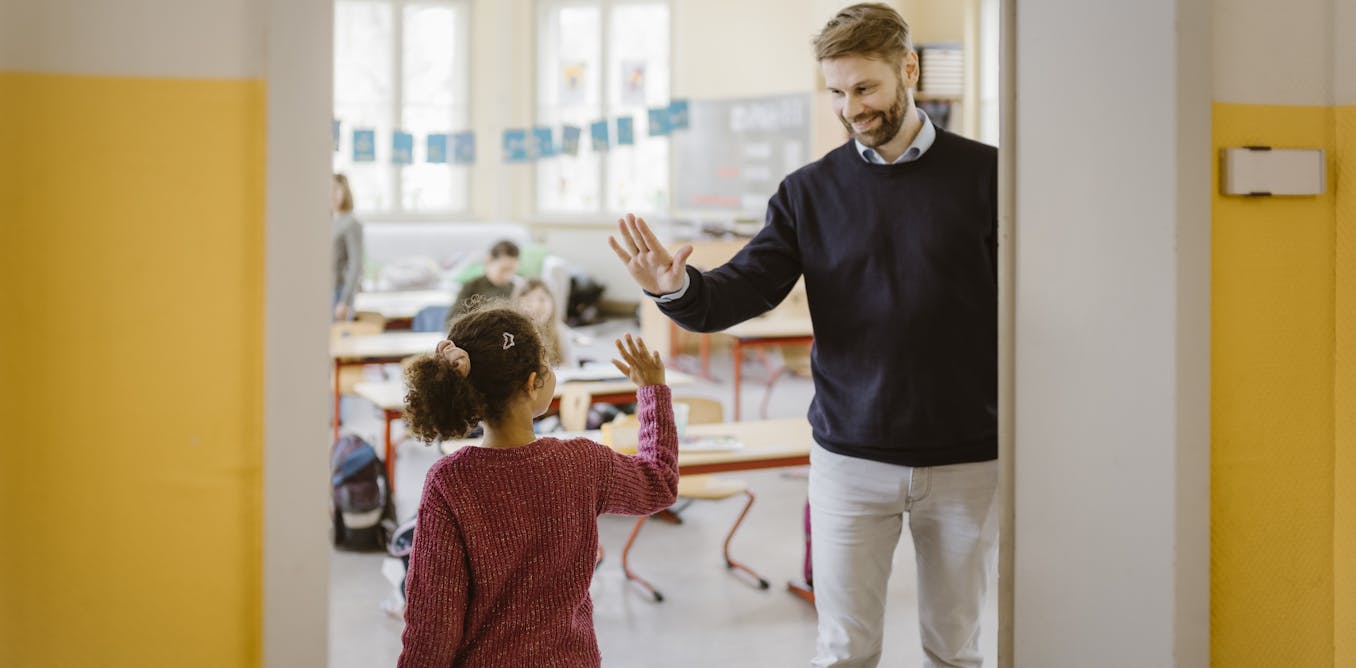Education
AI pioneers want bots to replace human teachers – here’s why that’s unlikely
OpenAI co-founder Andrej Karpathy envisions a world in which artificial intelligence bots can be made into subject matter experts that are “deeply passionate, great at teaching, infinitely patient and fluent in all of the world’s languages.” Through this vision, the bots would be available to “personally tutor all 8 billion of us on demand.”
The embodiment of that idea is his latest venture, Eureka Labs, which is merely the newest prominent example of how tech entrepreneurs are seeking to use AI to revolutionize education.
Karpathy believes AI can solve a long-standing challenge: the scarcity of good teachers who are also subject experts.
And he’s not alone. OpenAI CEO Sam Altman, Khan Academy CEO Sal Khan, venture capitalist Marc Andreessen and University of California, Berkeley computer scientist Stuart Russell also dream of bots becoming on-demand tutors, guidance counselors and perhaps even replacements for human teachers.

As a researcher focused on AI and other new writing technologies, I’ve seen many cases of high-tech “solutions” for teaching problems that fizzled. AI certainly may enhance aspects of education, but history shows that bots probably won’t be an effective substitute for humans. That’s because students have long shown resistance to machines, however sophisticated, and a natural preference to connect with and be inspired by fellow humans.
The costly challenge of teaching writing to the masses
As the director of the English Composition program at the University of Pittsburgh, I oversee instruction for some 7,000 students a year. Programs like mine have long wrestled with how to teach writing efficiently and effectively to so many people at once.
The best answer so far is to keep class sizes to no more than 15 students. Research shows that students learn writing better in smaller classes because they are more engaged.
Yet small classes require more instructors, and that can get expensive for school districts and colleges.
Resuscitating dead scholars
Enter AI. Imagine, Karpathy posits, that the great theoretical physicist Richard Feynman, who has been dead for over 35 years, could be brought back to life as a bot to tutor students.
For Karpathy, an ideal learning experience would be working through physics material “together with Feynman, who is there to guide you every step of the way.” Feynman, renowned for his accessible way of presenting theoretical physics, could work with an unlimited number of students at the same time.
In this vision, human teachers still design course materials, but they are supported by an AI teaching assistant. This teacher-AI team “could run an entire curriculum of courses on a common platform,” Karpathy wrote. “If we are successful, it will be easy for anyone to learn anything,” whether it be a lot of people learning about one subject, or one person learning about many subjects.
Other efforts to personalize learning fall short
Yet technologies for personal learning aren’t new. Exactly 100 years ago, at the 1924 meeting of the American Psychological Association, inventor Sidney Pressey unveiled an “automatic teacher” made out of typewriter parts that asked multiple-choice questions.
In the 1950s, the psychologist B. F. Skinner designed “teaching machines.” If a student answered a question correctly, the machine advanced to ask about the problem’s next step. If not, the student stayed on that step of the problem until they solved it.
In both cases, students received positive feedback for correct answers. This gave them confidence as well as skills in the subject. The problem was that students didn’t learn much – they also found these nonhuman approaches boring, education writer Audrey Watters documents in “Teaching Machines.”
More recently, the world of education saw the rise and fall of “massive open online courses,” or MOOCs. These classes, which delivered video and quizzes, were heralded by The New York Times and others for their promise of democratizing education. Again, students lost interest and logged off.

Other web-based efforts have popped up, including course platforms like Coursera and Outlier. But the same problem persists: There’s no genuine interactivity to keep students engaged. One of the latest casualties in online learning was 2U, which acquired leading MOOC company edX in 2021 and in July 2024 filed for bankruptcy restructuring to reduce its US$945 million debt load. The culprit: falling demand for services.
Now comes the proliferation of AI-fueled platforms. Khanmigo deploys AI tutors to, as Sal Khan writes in his latest book, “personalize and customize coaching, as well as adapt to an individual’s needs while hovering beside our learners as they work.”
The educational publisher Pearson, too, is integrating AI into its educational materials. More than 1,000 universities are adopting these materials for fall 2024.
AI in education isn’t just coming; it’s here. The question is how effective it will be.
Drawbacks in AI learning
Some tech leaders believe bots can customize teaching and replace human teachers and tutors, but they’re likely to face the same problem as these earlier attempts: Students may not like it.
There are important reasons why, too. Students are unlikely to be inspired and excited the way they can be by a live instructor. Students in crisis often turn to trusted adults like teachers and coaches for help. Would they do the same with a bot? And what would the bot do if they did? We don’t know yet.
A lack of data privacy and security can also be a deterrent. These platforms collect volumes of information on students and their academic performance that can be misused or sold. Legislation may try to prevent this, but some popular platforms are based in China, out of reach of U.S. law.
Finally, there are concerns even if AI tutors and teachers become popular. If a bot teaches millions of students at once, we may lose diversity of thought. Where does originality come from when everyone receives the same teachings, especially if “academic success” relies on regurgitating what the AI instructor says?
The idea of an AI tutor in every pocket sounds exciting. I would love to learn physics from Richard Feynman or writing from Maya Angelou or astronomy from Carl Sagan. But history reminds us to be cautious and keep a close eye on whether students are actually learning. The promises of personalized learning are no guarantee for positive results.
-

 Education5h ago
Education5h agoColorado students and educators spar over cellphone bans in schools
-

 Education2d ago
Education2d agoIn a time of challenge and innovation, a Colorado library card checks out more than books. Lots more.
-

 Education6d ago
Education6d agoFour-day school weeks have exploded across Colorado districts — and are setting students back
-

 Education1w ago
Education1w agoParents have been pushing for better playgrounds for kids with disabilities. Now even small towns are getting in on it.
-

 Education1w ago
Education1w agoThis anthropology course looks at building design from the standpoint of different species
-

 Education1w ago
Education1w agoHow to get your kids ready to go back to school without stress − 5 tips from an experienced school counselor
-

 Education1w ago
Education1w agoShortage of Black doctors is rooted in racist history − a $600M gift will help historically Black medical schools address the gap
-

 Education2w ago
Education2w agoBirths in metro Denver are falling faster than much of the country. Here’s what it means for the future.




















